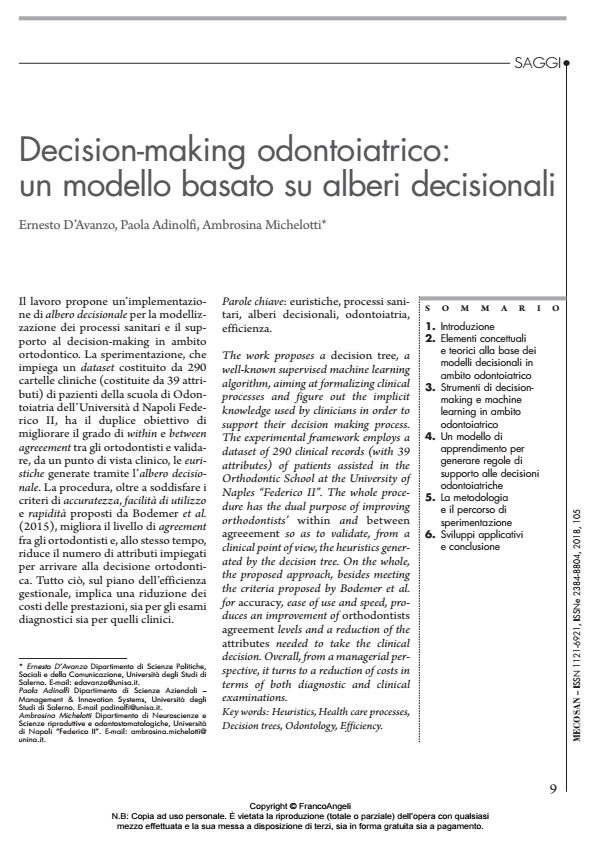Decision-making odontoiatrico: un modello basato su alberi decisionali
Journal title MECOSAN
Author/s Ernesto D’Avanzo, Paola Adinolfi, Ambrosina Michelotti
Publishing Year 2019 Issue 2018/105
Language Italian Pages 16 P. 9-24 File size 428 KB
DOI 10.3280/MESA2018-105002
DOI is like a bar code for intellectual property: to have more infomation
click here
Below, you can see the article first page
If you want to buy this article in PDF format, you can do it, following the instructions to buy download credits

FrancoAngeli is member of Publishers International Linking Association, Inc (PILA), a not-for-profit association which run the CrossRef service enabling links to and from online scholarly content.
The work proposes a decision tree, a well-known supervised machine learning algorithm, aiming at formalizing clinical processes and figure out the implicit knowledge used by clinicians in order to support their decision making process. The experimental framework employs a dataset of 290 clinical records (with 39 attributes) of patients assisted in the Orthodontic School at the University of Naples "Federico II". The whole procedure has the dual purpose of improving orthodontists’ within and between agreeement so as to validate, from a clinical point of view, the heuristics generated by the decision tree. On the whole, the proposed approach, besides meeting the criteria proposed by Bodemer et al. for accuracy, ease of use and speed, produces an improvement of orthodontists agreement levels and a reduction of the attributes needed to take the clinical decision. Overall, from a managerial perspective, it turns to a reduction of costs in terms of both diagnostic and clinical examinations.
Keywords: Heuristics, Health care processes, Decision trees, Odontology, Efficiency
Ernesto D’Avanzo, Paola Adinolfi, Ambrosina Michelotti, Decision-making odontoiatrico: un modello basato su alberi decisionali in "MECOSAN" 105/2018, pp 9-24, DOI: 10.3280/MESA2018-105002